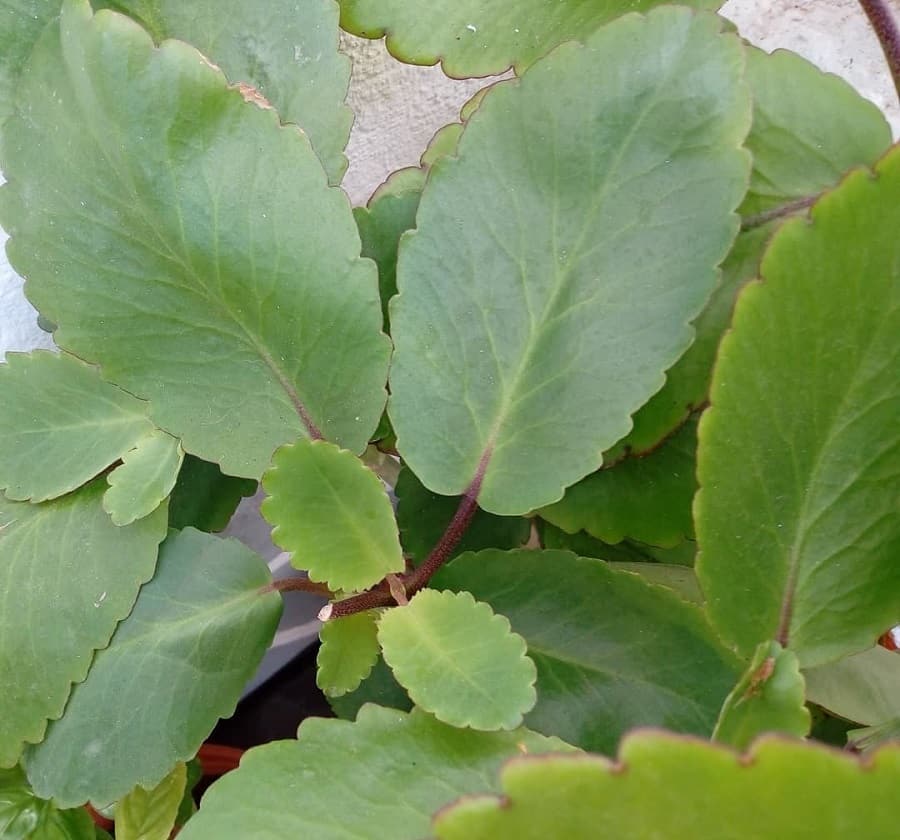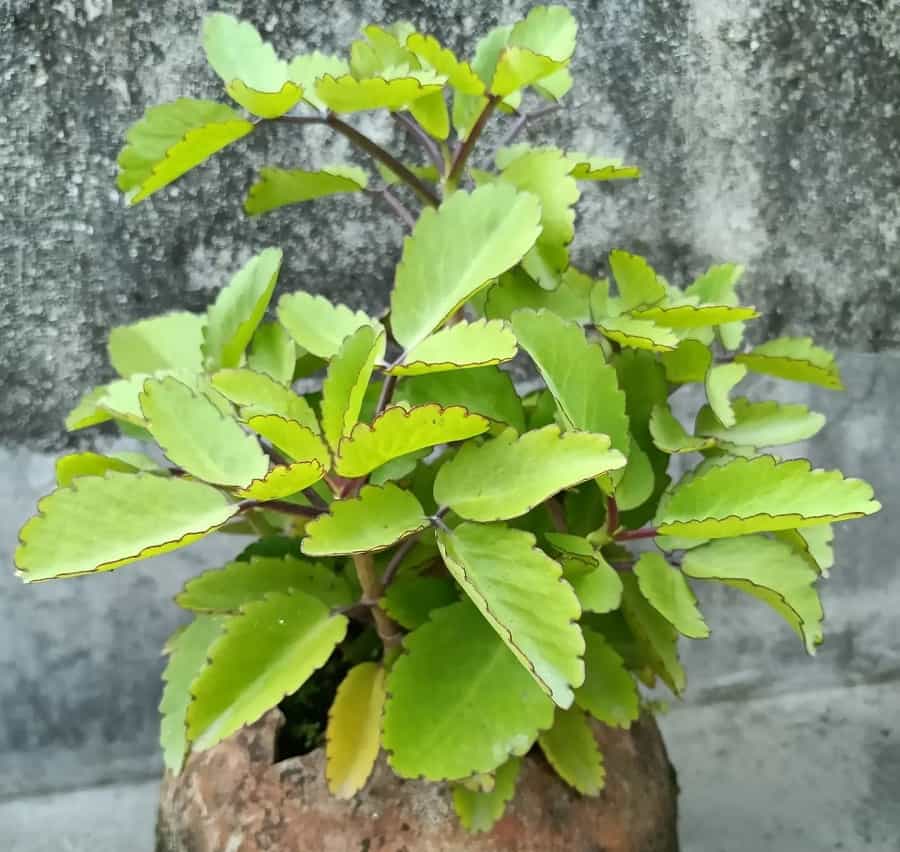Kalanchoe pinnata Plant: Characteristics and Care
Have you ever heard of the Kalanchoe pinnata plant? It’s a cool succulent that comes from Madagascar but is now popular as a houseplant worldwide. People also call it by different names like air plant, cathedral bells, miracle leaf, ranakalli, and life plant.
When you look at this plant, you’ll notice its tall stems covered in vibrant green leaves with a reddish-brown edge. These leaves have a unique curled shape. And that’s not all, this plant is always showing off its beautiful red flowers!
So if you’re curious and want to learn more about caring for and propagating the fascinating Kalanchoe pinnata plant, keep reading!

Related Post:
40+ Kalanchoe Lower Classifications With Pictures
Contents
Kalanchoe Pinnata Care
Caring for the Kalanchoe pinnata plant is easier than you might think. This tough little beauty doesn’t demand much attention and can thrive with minimal care. Here’s what you need to know:
Let There Be Light!
The Kalanchoe pinnata plant loves sunlight, but direct exposure to the blazing sun can harm it, especially in hot areas. To protect your succulent, place it in lightly shaded spots during the day. If you keep it indoors, find a window sill that receives plenty of light throughout the day.
Water with Caution
When it comes to watering the Kalanchoe pinnata plant, you need to be careful. These plants have built-in drought resistance, so overwatering can be detrimental. Always allow the soil to completely dry out before watering again.
Too much water can cause the roots and leaves to rot, attracting unwanted fungal growth that can harm the plant. On the flip side, if you withhold water, the leaves will droop and eventually fall off.

Choosing the Right Soil
Any soil mix designed for succulents will work wonders for your Kalanchoe pinnata plant. Succulent soil mixes are excellent at draining excess water, which is exactly what these plants need to avoid being overwatered.
If you prefer making your own soil mix, combine sand with a mixture of peat moss and clay in a 1:1 ratio. This will create a fast-draining medium ideal for most succulents. Adjust the amount of sand if you feel the potting mix is too loose.
Fertilizer Facts
The Kalanchoe pinnata plant doesn’t require fertilizer to thrive. It’s a hardy plant that can rely on the existing nutrients in the soil. But if you want to give it a little boost, you can use a slow-release fertilizer once a month or try a liquid fertilizer instead.
The Right Climate
The Kalanchoe pinnata plant adores warm climates and basks in sunlight during the summer. While it can endure colder temperatures during the winter, it’s best to keep them above 55 degrees Fahrenheit. If you live in an area with frigid winters, bring your plant indoors to protect it from freezing.
If it’s impossible to move your Kalanchoe pinnata inside, cover it with a frost cloth to shield it from the cold.

Pesky Pests and Diseases
Fortunately, the Kalanchoe pinnata plant isn’t prone to many pests or diseases. However, like all succulents, it can fall prey to mealybugs and aphids. Keep a close eye on the leaves for any signs of these pests and regularly inspect your plant.
If you spot any unwanted visitors, wipe down the leaves with an insecticide. For an organic alternative, try using diluted neem oil but be careful not to burn the plant.
Kalanchoe Pinnata Propagation
You’ll be pleased to know that propagating the Kalanchoe pinnata plant is a breeze – even for novice gardeners. You can propagate it using both stems and leaves, and the process is straightforward.
Regardless of the method you choose, start by sterilizing a pair of gardening shears. Snip off a few cuttings of stems or leaves and give them time to dry out in a sunny spot. It’s crucial to let the wounds heal and develop calluses before propagating to protect against root or stem rot.
Once the cuttings are ready, place them on a succulent soil mix. Don’t pour water directly on them; instead, mist them gently about five times a day. Keep the cuttings away from harsh sunlight.
When the cuttings take root in the soil, gradually increase watering. Treat them as you would any other mature succulent. Once they are big enough, transfer them to individual pots.
Now that you know all about the care and propagation of the enchanting Kalanchoe pinnata plant, you’re ready to create your very own succulent haven!
Ranakalli Plant Uses
Ranakalli, also known as Kalanchoe pinnata, has several uses due to its medicinal and practical properties. Here are some common uses of the ranakalli plant:
- Medicinal Purposes: The ranakalli plant is widely used in traditional medicine to treat various ailments. Its leaves are known for their anti-inflammatory, antimicrobial, and analgesic properties. The plant is often used to alleviate pain, reduce swelling, and promote wound healing.
- Digestive Aid: The ranakalli plant is believed to have digestive benefits. Its leaves are sometimes consumed as a tea or in other forms to help with stomach-related issues such as indigestion, constipation, and diarrhea.
- Respiratory Aid: In some cultures, the ranakalli plant is used to relieve respiratory problems such as coughs, asthma, and bronchitis. The leaves are sometimes made into a syrup or used in steam inhalation for respiratory relief.
- Anti-diabetic Properties: Studies have suggested that the ranakalli plant may have antidiabetic effects. It is believed to help regulate blood sugar levels and improve insulin sensitivity, making it potentially beneficial for individuals with diabetes.
- Insect Bites and Stings: The ranakalli plant is known for its soothing properties when applied topically to insect bites and stings. It can help reduce inflammation, relieve itching, and provide temporary relief from the discomfort caused by such incidents.
- Ornamental Plant: Apart from its medicinal uses, ranakalli plants are also grown for their aesthetic appeal. With their unique curled green leaves, brown-red borders, and vibrant red flowers, they make beautiful additions to gardens or as houseplants.
While the ranakalli plant has been traditionally used for many purposes, it’s important to note that appropriate medical advice should be sought before using it for any specific health issue.
